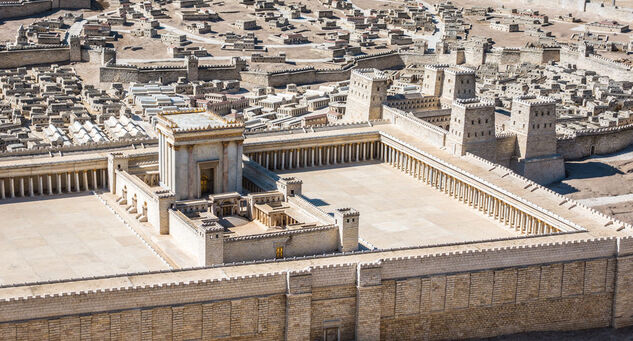It is tempting to believe it may have always been this way. The Gospels tell us that Judas profited from the bag he kept (John 12:6), and in Acts we read the story of Ananias and Sapphira soon after the Church’s inception. Although the sin of that couple was lying to the Holy Spirit (Acts 5:3, 9), the root of their problem clearly lay in the desire to hold onto what had been given to the church – in this particular case by them.
But, sometimes, history can throw light on situations such as this and give us a better perspective. During Rome’s great persecution of Christians enacted during the latter part of the reign of Diocletian (AD 284 to 305), Imperial troops were sent to seize the possessions of a church in the city of Cirta (present day Constantine in Algeria) in North Africa. The soldiers were doubtless delighted to find some items of gold, silver, and bronze – the chalices, urns, lamps, candlesticks and other small items used in the church’s worship services. The exact value of these metal objects is not known, but it is clear that they did not represent substantially more than what was in use by the church in its day-to-day functioning.
However, the soldiers were probably suspicious that there were so few books (a single codex was found in the church) so they searched the homes of the church leaders and found a total of 37 manuscripts, which the Christians had hidden. Clearly, the manuscripts regarding the faith were of much greater value in the eyes of these Christians than the more expensive furnishings that had been left in plain sight in the church.
But in a storeroom within the church building the soldiers found goods of a different kind. An imperial document dated May 19, AD 303, lists these hidden-away treasures: 82 women’s tunics, 38 capes, 16 men’s tunics, 13 pairs of men’s shoes, 47 pairs of women’s shoes, and 19 peasants’ wraps (A. Luijendijk, “Papyri from the Great Persecution: Roman and Christian Perspectives,” Journal of Early Christian Studies, 16(3): 2008, 341-369; p. 350).
These carefully amassed items of clothing were not for the benefit of the leaders of the church, but were items collected to help the poor, the widows, and the destitute of the city. Certainly the church had accrued some valuable vessels for use in its worship, but the value of the items was commensurate with their intended use (2 Timothy 2:20). What is clear is that the treasures of this church were its documents of faith, and what was being amassed was being gathered for others.
Surely, this has often been the case. For every church infected with the heart of mammon there have been others – and frequently many others – infused with the heart of Christ. Although Acts itself gives prominent mention to the cautionary story of Ananias and Sapphira, that story follows directly on the heels of the statement that “… God’s grace was so powerfully at work in them all that there were no needy persons among them. For from time to time those who owned land or houses sold them, brought the money from the sales and put it at the apostles’ feet, and it was distributed to anyone who had need …” (Acts 4:33-35).
If Ananias and Sapphira were in the Church from near its inception, many who reflected the faith truly and who were gathering for others were also there from the beginning. Sometimes we need to remind ourselves of this fact of history when we are confronted by the failings of the day in which we live. The treasures of a great many of the earliest believers, of the Christians of Cirta in AD 303, and of many churches throughout history were their faith and their love for others. May our treasures be the same.




 RSS Feed
RSS Feed
